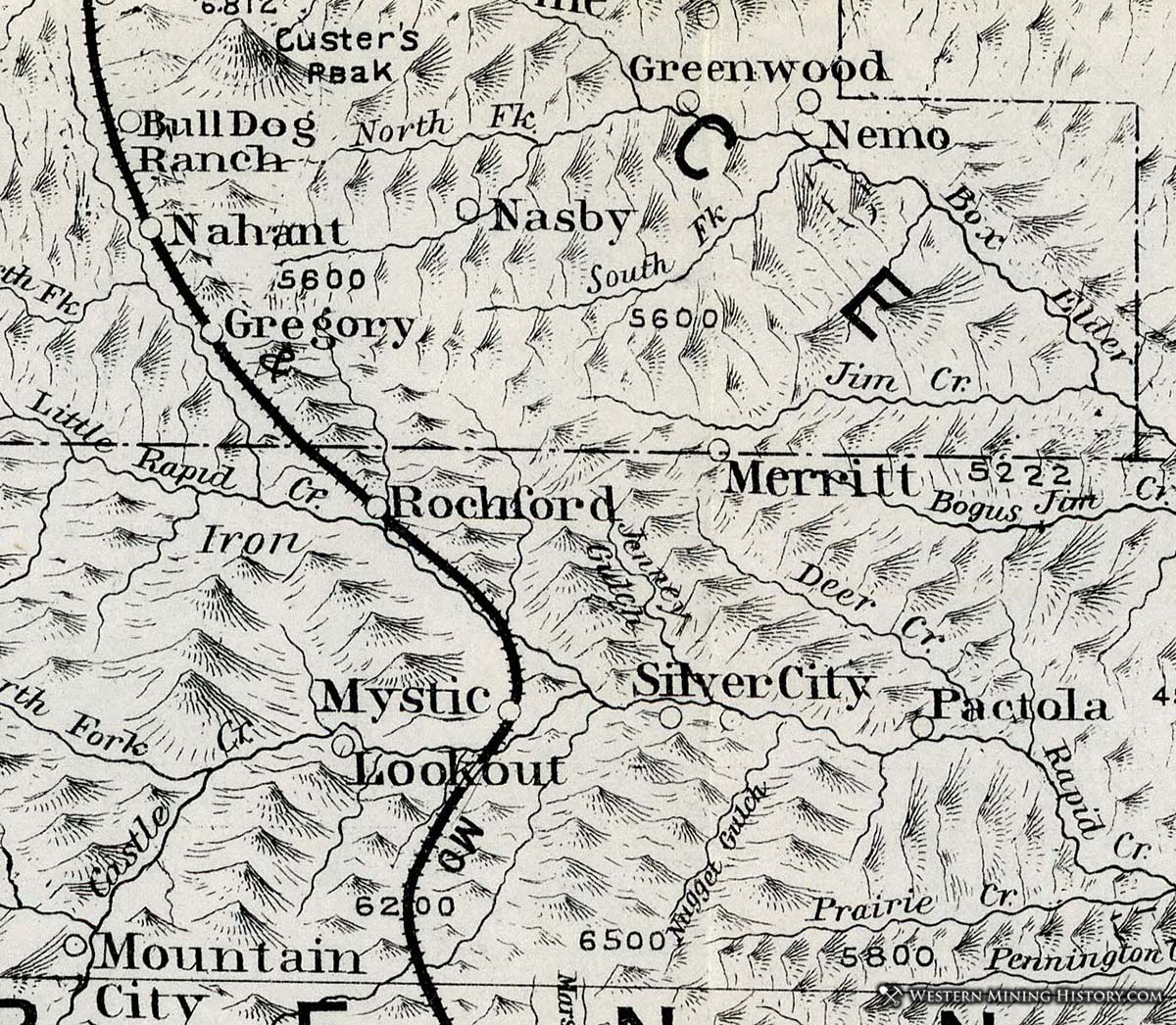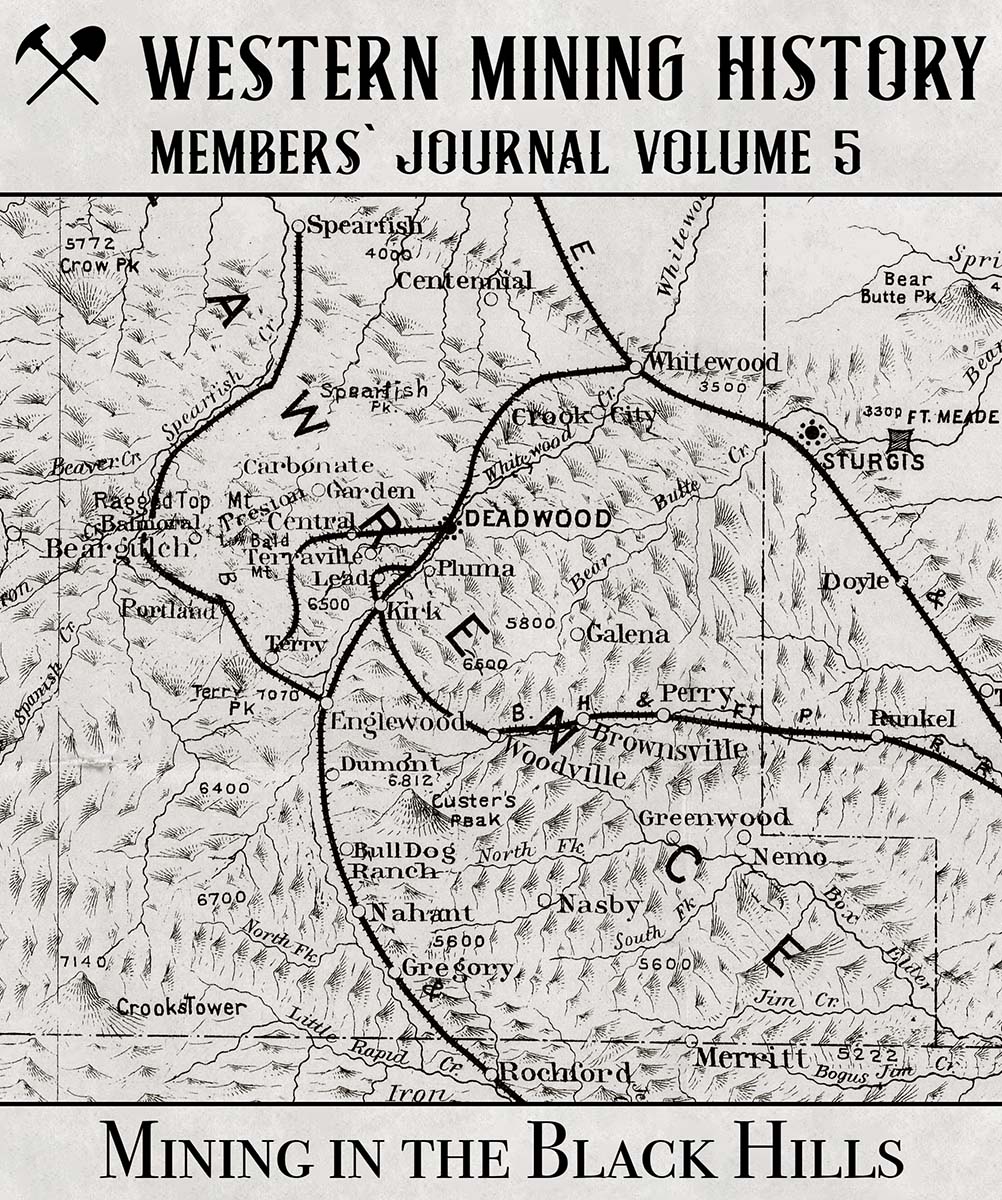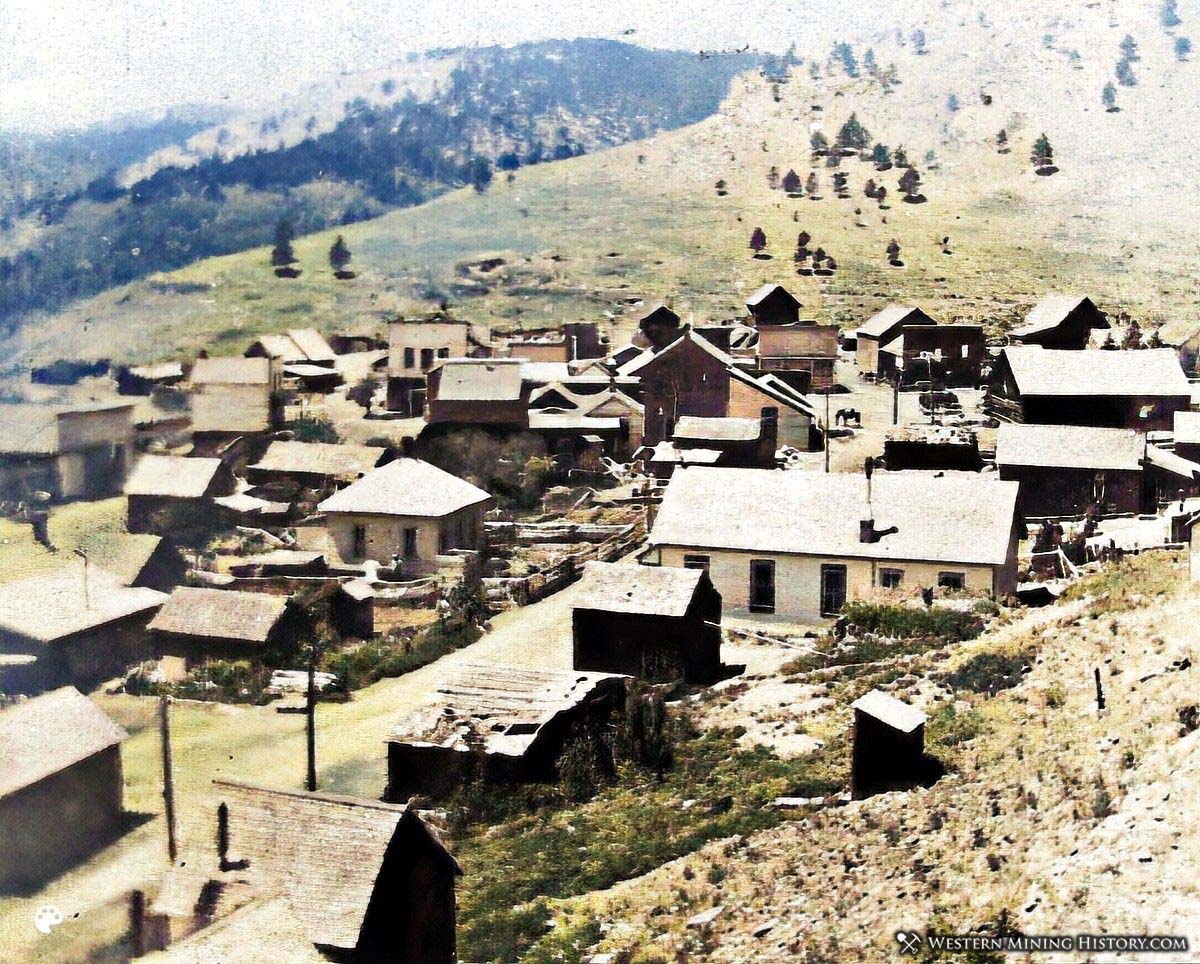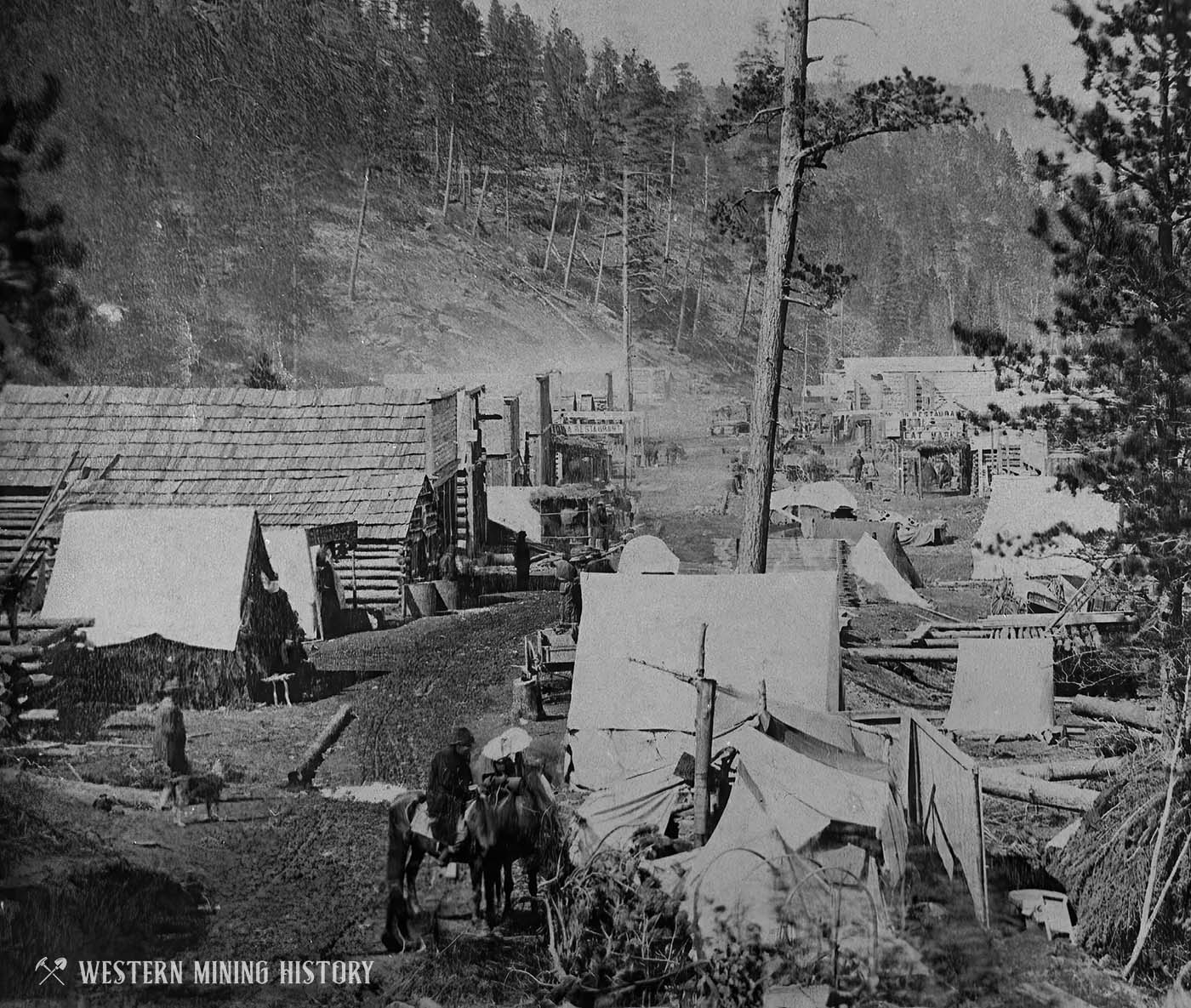Rochford History
Gold was first discovered in this area in 1876, but the boom at Deadwood Gulch kept most miners away until late 1878 when a rush to Rochford occurred. By December of that year, the town was said to have over 500 inhabitants, 100 log cabins, six stores, three saloons, a swamill, and a newspaper The Black Hills Central.
In December of 1878, newspaper articles reported that "a number of Deadwood firms are arranging to establish branches in Rochford". Town lots were selling for up to $600.
The December 1878 edition of the Black Hills Weekly Journal described the town:
We found Rochford the liveliest mining camp we ever visited in the Black Hills, except Deadwood in the spring and summer of '76... Last August there were in Rochford two cabins one having been erected over two years. Now there are over hundred houses, some business buildings of considerable pretension, and preparations are making for the erection of scores more. There are five mercantile houses, a number of saloons and boarding houses, two restaurants, two blacksmith shops; a two-story hotel, a variety theatre and other important structures are being erected.A number of families have located in the place, and others are going in constantly. We estimate the town population at from 300 to 500; the population of the district at from 200 to 1,000; and every day adds largely to both. By the first of March next it is not improbable that Rochford will have a fixed population of 1,500 souls.
These enthusiastic predictions did not come true however, and the excitement at Rochford ended as quickly as it started. By 1880 the population was down to just over 300 residents. By 1900 there were less than 50 residents and most commercial businesses had closed.

The Standby Mine was one of the primary gold producers of the Rochford area. In October of 1878 newspapers reported that the mine was "being worked by a large force of men night and day. It has a shaft down forty feet, and as they go down the ore increases in richness." The mine was still operating in 1904 when the publication Black Hills Illustrated gave the following description:
Standby Mine.-J. B. Baker, manager, Lead, S. D. This property is located at Rochford, on the main line of the Burlington Route, and consists of 75 acres of patented ground and 150 horse- power water right on Rapid creek. It is equipped with a 60-stamp mill, air compressor, etc. There are large bodies of low-grade ore which in the past have been treated by the free-milling process. It has been found that only about 30 per cent of the values can be saved by this process, and plans are under way for the erection of a concentrating and cyaniding annex to the mill. Extensive experiments tend to prove that the values can be successfully extracted by these methods.
Although the post office closed in 1974, there is still a small population today that is supported by tourism.
Mining in the Black Hills

Western Mining History Member's Journal Volume 5: "Mining in the Black Hills", takes a closer look at the distribution of mining districts and towns the Black Hills of South Dakota.
Deadwood: The Ultimate Photo Collection
The Black Hills Gold Rush was one of the most significant historical events in the western United States. Deadwood: The Ultimate Photo Collection contains over 50 images capturing the early history of this famous gold region.

